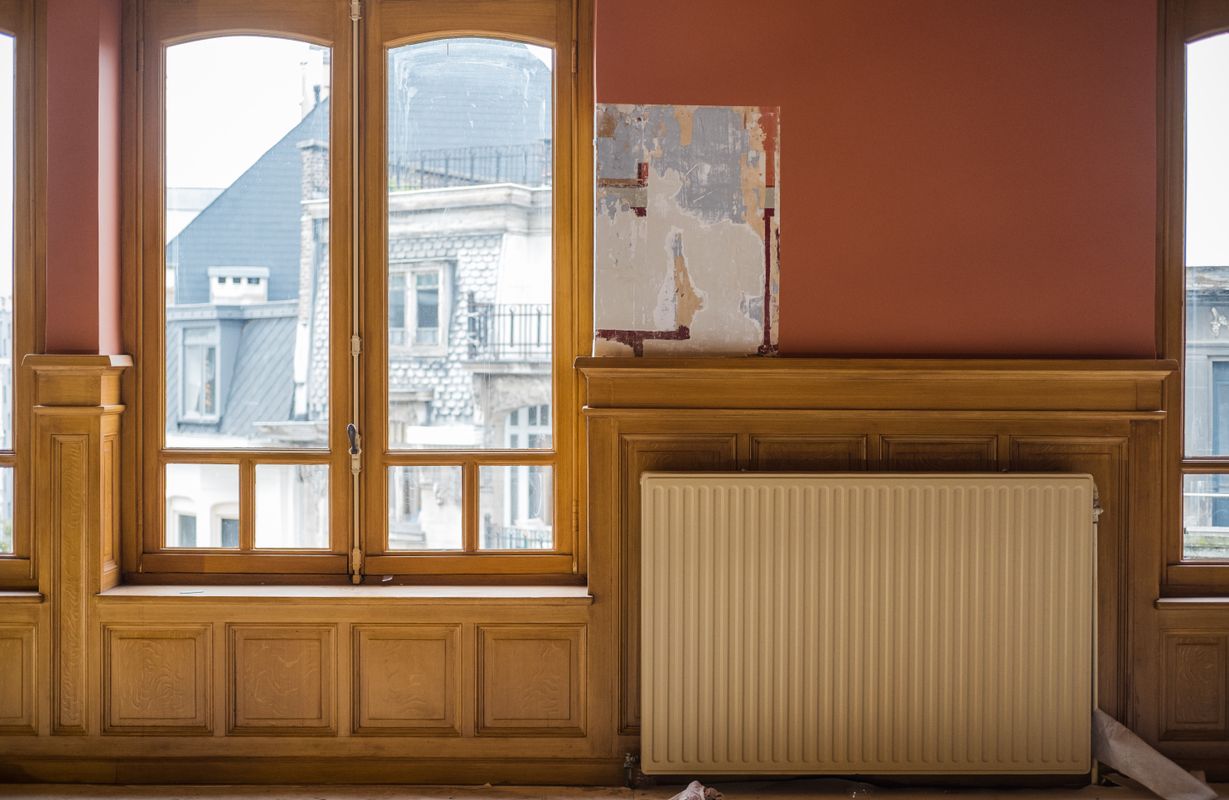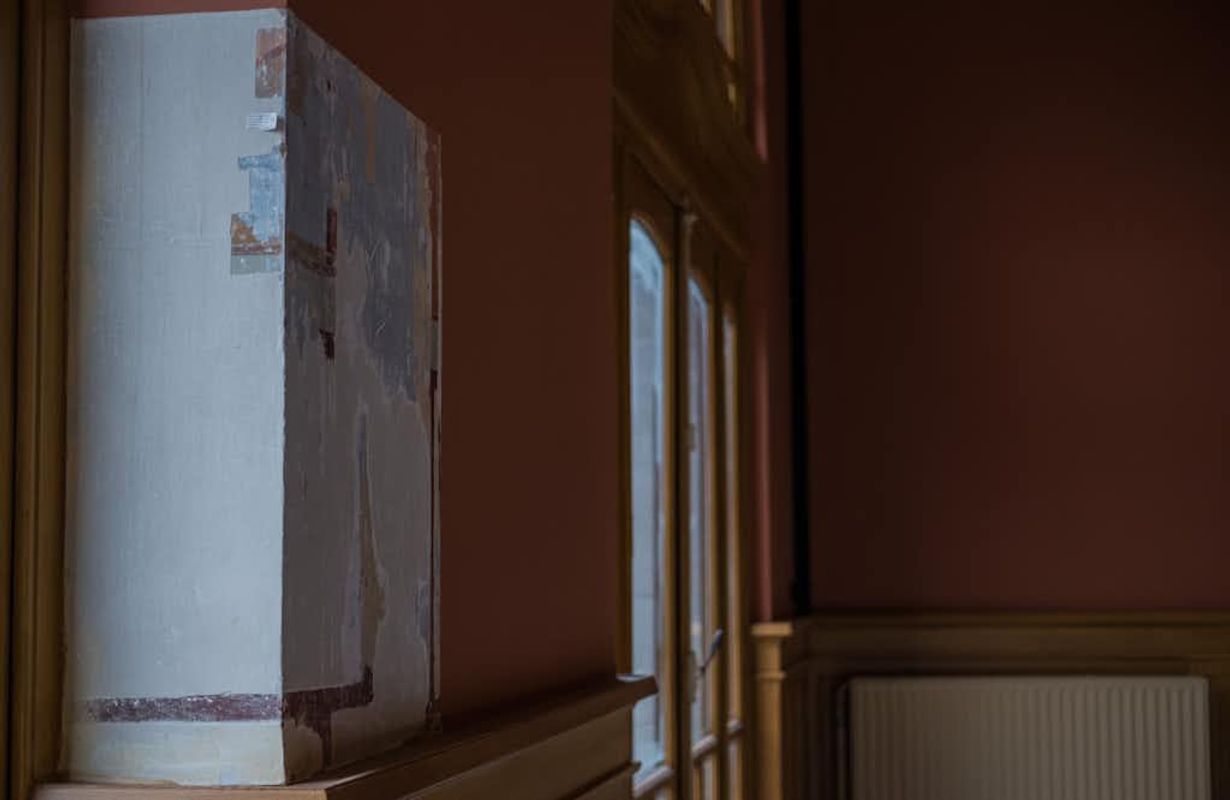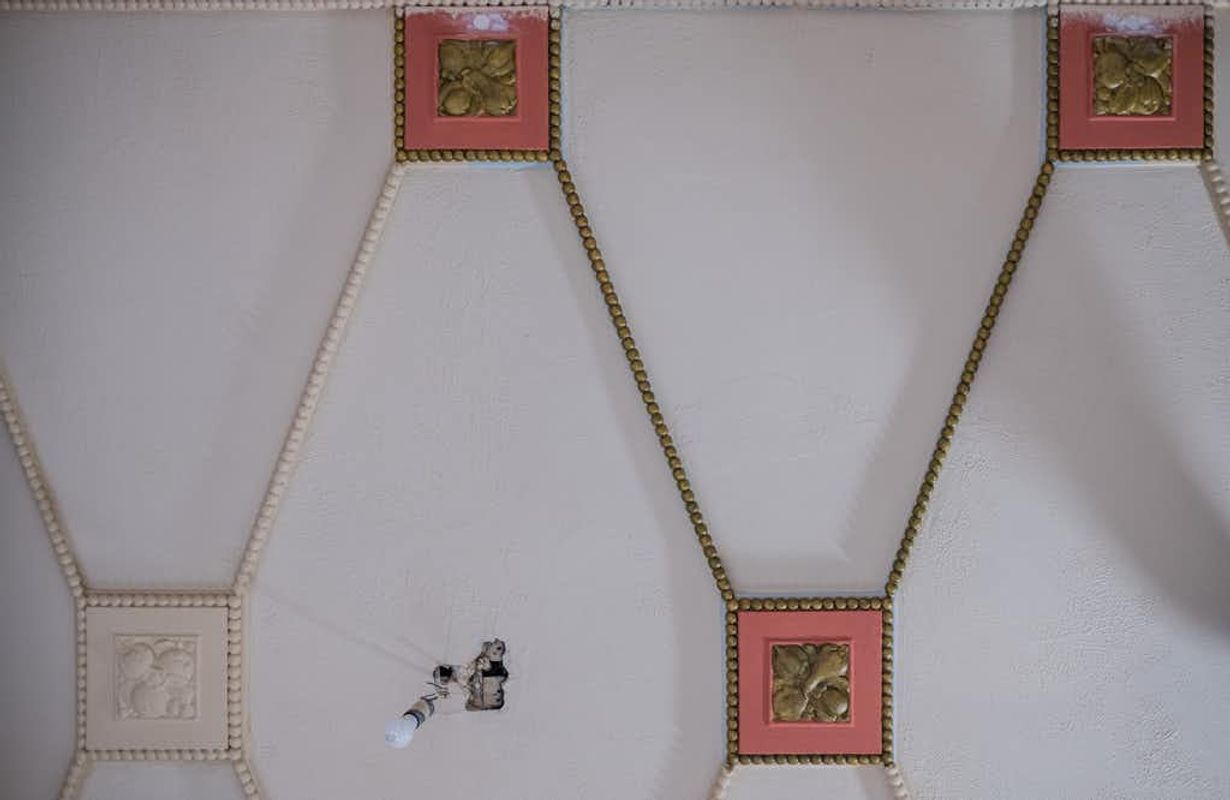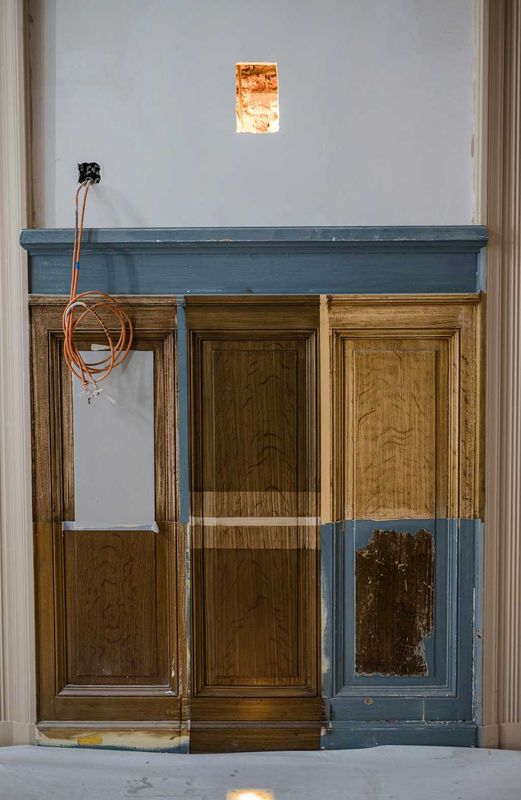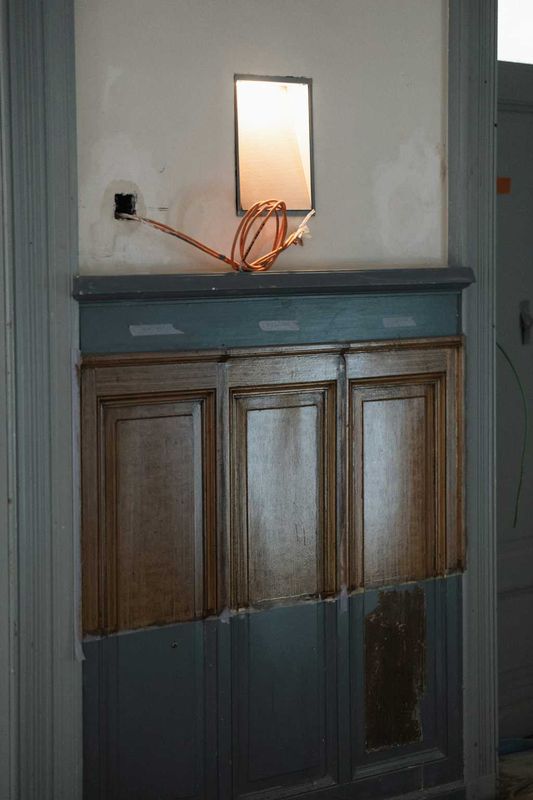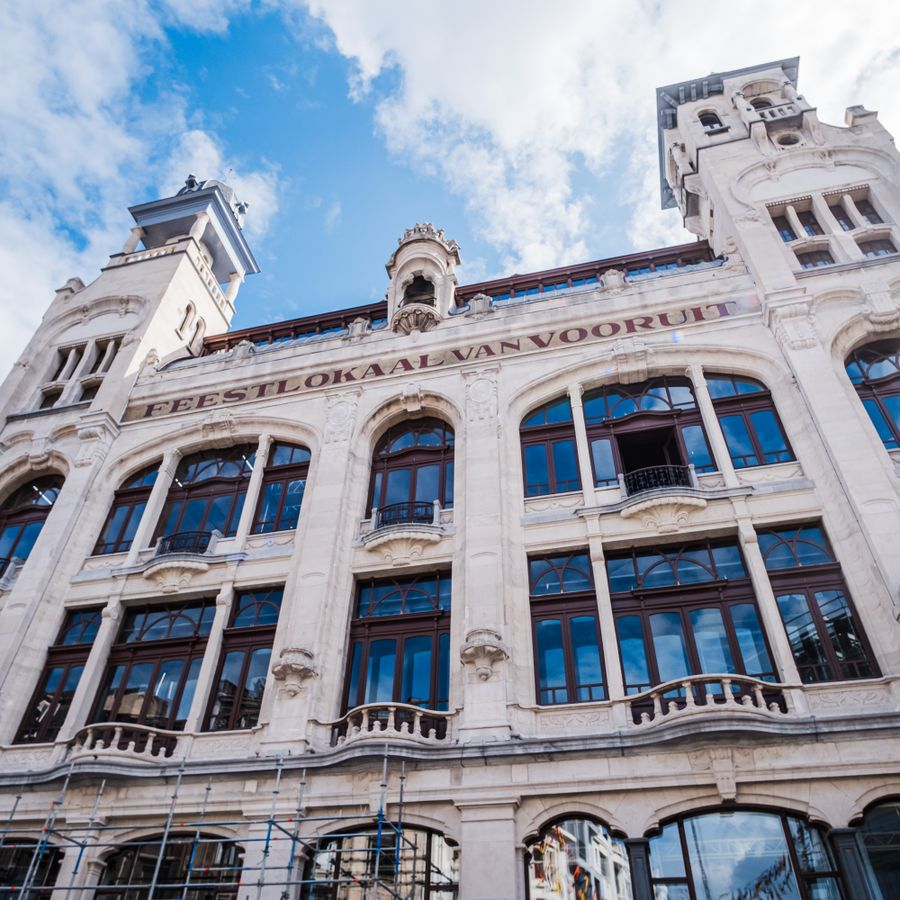
THE INTERIOR OF DE VOORUIT TURNS OUT TO BE MUCH MORE COLOURFUL THAN EXPECTED
The restoration of the front section of De Vooruit is entering its final months.
In mid-January, after a year and a half, the Ballroom, Dome Hall, dance studio and music studio will be back in use during the Smells like Circus festival. A festive opening week will follow in early February.
The work is proceeding according to plan, except for the results of the colour studies. These will unexpectedly change the appearance of the front section completely.
For the restoration, building contractor VIERNULVIER is reverting to the original plans from 1913. Because the colours were not described or documented, colour studies were carried out at various locations in the building. This involved meticulously scraping away small layers of paint to reveal the original layers.
Matthias Belpaire, infrastructure and monument coordinator at VIERNULVIER:
"Where possible, we opt for the original colours, as De Vooruit must have looked when it opened just before the First World War. If we deviate from this, it is because the function of the room is not compatible with the original colours. Think of colours that reflect too much light, disrupting the use of theatre and concert lighting. Sometimes there are also financial constraints. For example, the fruit motifs on the ceiling of the Ballroom were coloured separately and the egg mouldings were painted with bronzine paint. Reapplying this to the entire ceiling of the Ballroom is not within our budget, so we have decided to do this only above the central strip of the hall."
Here and there, we are also leaving a witness window open, which will give visitors an insight into the use of colour over the years. It is striking that the choice of colours at the beginning of the 20th century was much more expressive. Over the years, De Vooruit was increasingly painted over in shades of white and beige.
Architect Leen Bruggeman (Arch & Teco):
‘The most important factor in choosing the colours is history. Architect Ferdinand Dierkens made De Vooruit an eclectic building in many ways. There is no dominant colour that recurs throughout the building. And the ornaments are also different in each room. De Vooruit is a library of styles, probably intended to inspire the workers who passed by.’In 1913, pine panelling was installed in a number of rooms and painted over with imitation oak. Because this had also disappeared under several layers of faded white paint, a team specialising in the restoration of historically valuable finishes reconstructed the imitation wood.
For the choice of wallpaper for the Ballroom, we had to rely on a few black-and-white photographs. This led us to a similar floral motif that matches the original design in terms of size, repetition and shape, but the colour was updated to take into account the use of the room for concerts, debates and nightlife.



